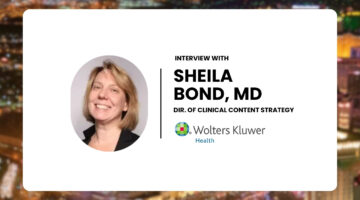Stem cell technology represents one of the most fascinating and controversial medical advances of the past several decades. By now the enormous controversy which surrounded the use of federal funds to conduct scientific research on human stem cells during the George W. Bush administration has largely blown over. Five years have passed since President Obama lifted federal funding restrictions, and amazing progress has already been made in the field.
What Puts the “Stem” in Stem Cells?

How Zelis is Transforming Healthcare Payments with Enterprise AI
How Zelis hopes to solve the healthcare financial system for payers and providers.
One can make a good case for stem cells being the most fascinating and versatile cells in the human body. This is precisely due to their “stem” role. In their most basic form, they’re capable of both replicating themselves an unlimited number of times and differentiating themselves into a huge number of other cell types. Muscle cells, brain cells, organ cells, and many others can all be created from stem cells. If you’re interested, the NIH has an awesome introduction on stem cells on their website.
The question which has arisen since the discovery of this amazing cell type has been how to harness their power and versatility. This is the primary focus of research today: how can we precisely control stem cells to perform whatever tasks we need them to do? Of course, other important issues, such as figuring out the best places from which to harvest stem cells, exist.
Exciting Potential New Uses

Transforming Clinical Content with Ambient & Generative AI
Sheila Bond, MD, talked about the latest trends regarding integration of AI in healthcare.
Because of their role in the body, the number of potential applications for stem cells are truly stunning. From building custom cell clusters with 3D printers to curing a variety of diseases through bone marrow transplants, growing organs for transplants, and even growing edible meat, research is progressing at a frantic pace.
There are two particular areas of research which seem to hold the greatest promise at this point. The first is organs. Anyone who has ever been involved in an organ transplant knows how incredibly complex and difficult the process is. But difficulties like finding the right donor, preserving the organ, and finding enough supply to meet the incredible demand could all be overcome if we could simply use stem cells to grow a custom organ for each transplant from scratch.
Besides this perhaps science-fiction-sounding process of growing organs, there’s also incredible excitement surrounding the potential of bone marrow transplants to cure diseases like HIV and Leukemia. This is done by implanting stem cells containing genetic mutations which confer immunity to a variety of diseases into a patient’s bone marrow, where they can begin naturally replicating and affecting the immune system.
This procedure also covers transplants designed simply to reintroduce healthy stem cells to help tackle a wider variety of ailments. Often, referred to as regenerative medicine as it involves stimulating the body’s preexisting repair mechanisms to help the healing process, this procedure also offer great promise.
Cautionary Tales
Naturally, the speed at which advances are being made in the field has led to problems as well. One recent well-publicized study which seemed to point to the possibility of achieving stimulus-triggered acquisition of pluripotency (essentially demonstrating a new type of stem cells) is now believed to have been fraudulent.
Another case has shown the dangers of improper freezing and thawing of stem cells for bone marrow transplants. The increasingly common procedure was conducted on children undergoing chemotherapy in a London hospital, but undetected problems in the state of the stem cells following their thawing resulted in the death of four of the children. While the general viability of the procedure is not under question, it does demonstrate how dangerous such new procedures can be when done improperly.
In general, with stem cells as well as with all other scientific and medical research, it’s always important to keep progress and claims in context. The tendency of the media to over-exaggerate important research and developments can lead to both unrealistic expectations and dangerously premature reliance on new treatments.
What Does the Future Hold?
While avoiding hyperbole, it’s still undeniable that stem cells have an exciting future role to play in modern medicine. This makes them an excellent point of focus for any young student or researcher. So whether you’re a vegetarian looking towards replacing factory farming with stem-cell grown organic meat or someone hoping to finally discover a cure for diseases like HIV, stem cells seem more than likely to play a critical role.
Don’t forget to take a second to let us know what you think about the future of stem cell research in the comments section.
Written by Eric Halsey
Eric has a longstanding interest in science, technology, and the public policy which impacts both. He’s a regular contributor for the AIMS Education Blog.
This post appears through the MedCity Influencers program. Anyone can publish their perspective on business and innovation in healthcare on MedCity News through MedCity Influencers. Click here to find out how.






